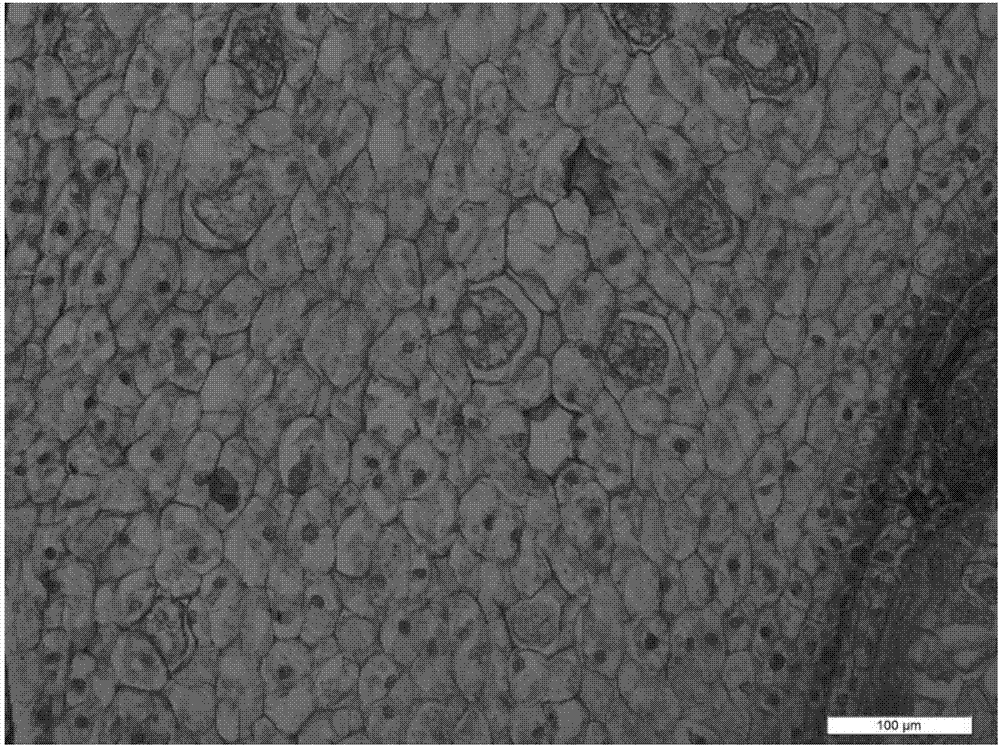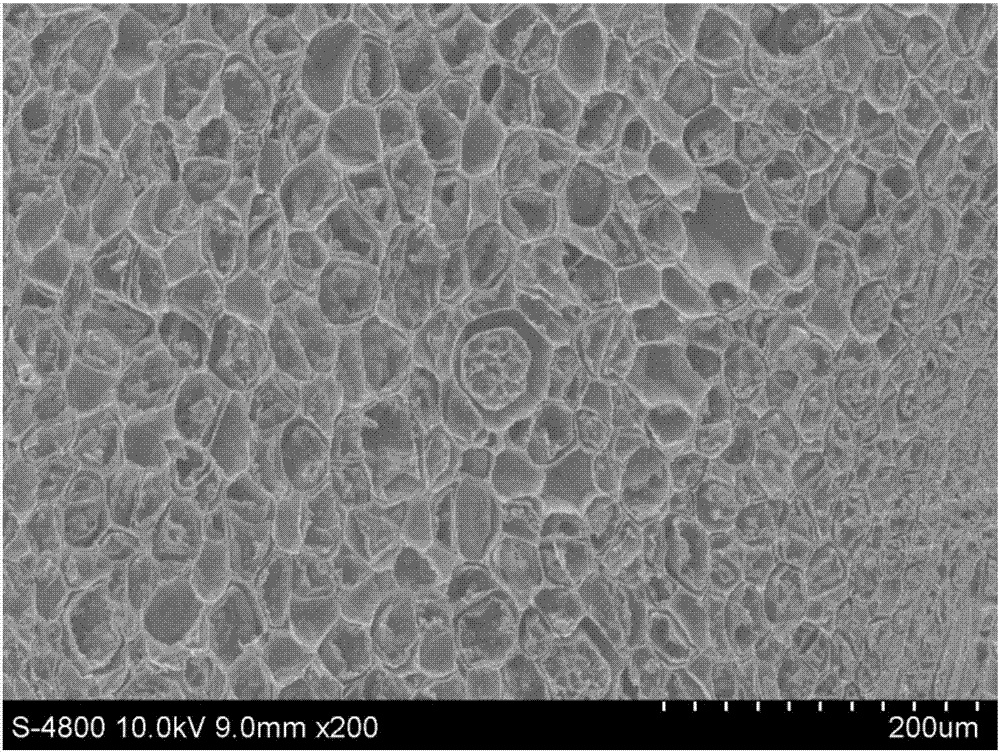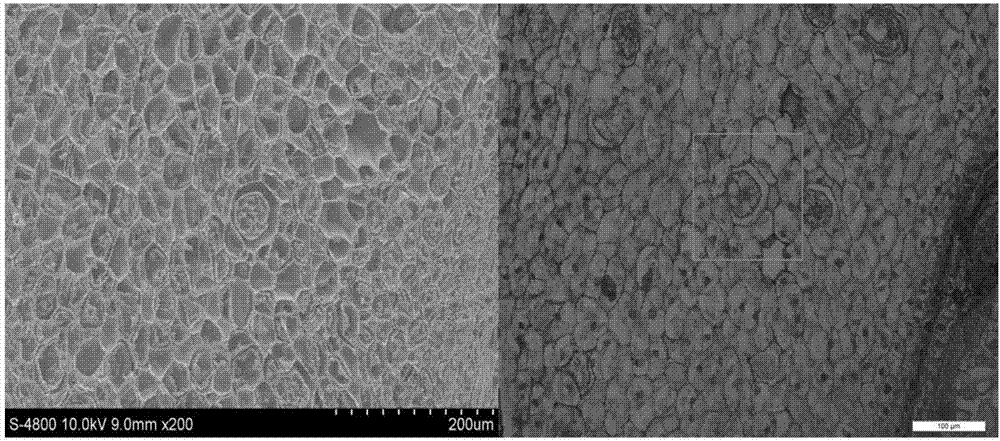Method for observing same sample by using paraffin section and scanning electron microscope
A scanning electron microscope and paraffin section technology, applied in the field of biological experiments, can solve the problems of inability to obtain a three-dimensional outline of plant tissue, waste of materials, inability to see the results of paraffin sections, etc., and achieve favorable effects of plant morphological development.
- Summary
- Abstract
- Description
- Claims
- Application Information
AI Technical Summary
Problems solved by technology
Method used
Image
Examples
Embodiment 1
[0026] The making of embodiment 1 paraffin section
[0027] The material is magnolia seeds
[0028] 1) Fixation: use FAA fixative solution (70% alcohol: formaldehyde: glacial acetic acid = 90:5:5), fix at room temperature for 24 hours.
[0029] 2) Soak in dehydration series solution, soak each reagent for one day, follow the order of Table 1-6.
[0030]
[0031]
[0032] 3) Dip wax
[0033] Adjust the temperature of the incubator to 60°C, put the sample in a glass bottle, add an appropriate amount of wax shavings, a small amount of tert-butanol, cover it, open the cover two days later, let the tert-butanol volatilize, and soak in the wax for a week.
[0034] 4) Embedding
[0035] Pour the liquid wax into the aluminum box and place it on the spreading machine to prevent solidification. The temperature of the spreading machine is set at 60°C. Put the material soaked in wax for a week into the liquid wax, and use hot tweezers when slowly solidifying at room temperature ...
Embodiment 2
[0047] Embodiment 2 dewaxing method and scanning electron microscope
[0048] Immersion dewaxing:
[0049] 1. Dewaxing--Reagent: xylene or tert-butanol
[0050] The remaining samples of the paraffin sections were divided into two groups, one group was soaked in xylene and placed in a 40°C incubator; the other group was soaked in tert-butanol and placed in a 60°C incubator, and the soaking time was set to 3 hours, 6 hours and 9 hours, and two samples for each time period were replicated three times.
[0051] 2. Transition to isoamyl acetate
[0052]
[0053] 3. Critical point drying
[0054] Put the material in a critical point dryer for critical point drying
[0055] 4. Electron microscope scanning
[0056] see attached results Figure 2-3 , Figure 8-14 .
PUM
 Login to View More
Login to View More Abstract
Description
Claims
Application Information
 Login to View More
Login to View More - R&D
- Intellectual Property
- Life Sciences
- Materials
- Tech Scout
- Unparalleled Data Quality
- Higher Quality Content
- 60% Fewer Hallucinations
Browse by: Latest US Patents, China's latest patents, Technical Efficacy Thesaurus, Application Domain, Technology Topic, Popular Technical Reports.
© 2025 PatSnap. All rights reserved.Legal|Privacy policy|Modern Slavery Act Transparency Statement|Sitemap|About US| Contact US: help@patsnap.com



